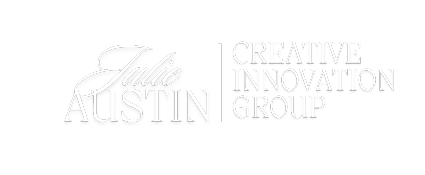Curiosity is one of the most powerful tools we have to fuel innovation, passion, and drive. When we lean into our natural sense of curiosity, we open ourselves up to new possibilities, expand our knowledge, and unleash our creative potential. As an innovation keynote speaker, I’ve witnessed firsthand how curiosity can inspire individuals and organizations to tap into this incredible resource, driving truly transformative change.
In this article, we’ll dive into why curiosity is key to sparking innovation, how it leads to continuous learning, and why embracing failure through curiosity is essential. I’ll also share ways to foster a culture of curiosity within organizations, so your team can experience the full benefits of this incredible trait.
Curiosity: The Catalyst for Innovation
Curiosity is at the heart of every groundbreaking innovation. It drives us to question how things work, why they work that way, and how they could work even better. As a curiosity keynote speaker, I often tell audiences that without curiosity, we wouldn’t have many of the inventions we rely on today. From the lightbulb to the smartphone, curiosity pushes us to explore the unknown and solve problems in new ways.
Take Steve Jobs, for example. He was driven by an insatiable curiosity that led him to question how technology could be used to improve people’s lives. His relentless pursuit of answers created iconic innovations like the iPhone, which revolutionized how we communicate.
At its core, curiosity encourages us to see the world from different perspectives and challenge assumptions. As highlighted by the Forbes Coaches Council, curiosity can unlock hidden potential and inspire creativity in the workplace. Read more about why curiosity matters in this insightful Forbes article.
Embracing the Unknown: The Role of Curiosity
When we allow ourselves to be curious, we’re also embracing the unknown. Stepping out of our comfort zones opens the door to new perspectives, fresh ideas, and unexpected opportunities.
As an innovation keynote speaker, I often challenge my audiences to get comfortable with uncertainty. One way I do this is through improv exercises, which force participants to think on their feet. There’s nothing quite like improv to drive home the importance of curiosity—you can’t predict the outcome, so you’re forced to stay curious and open to new directions.
By encouraging people to embrace uncertainty, we help them develop the skills they need to innovate. When you’re open to whatever comes your way, your curiosity leads you to explore ideas you might never have considered.
For more on how curiosity can spark creative breakthroughs, take a look at my article on the importance of gathering knowledge from a variety of sources, which you can read on my Creative Innovation Group website.
Continuous Learning: Curiosity in Action
Curiosity naturally fuels continuous learning. When you’re curious, you want to know more, and that desire for knowledge can keep you constantly evolving. In a world that’s changing faster than ever, curiosity gives you an edge. It allows you to stay ahead of the curve by continually learning new things and adapting to new trends.
As an innovation keynote speaker, I love to inspire audiences to cultivate a lifelong learning mindset. For me, that means watching channels like the Science Channel or exploring topics that are outside my usual interests. Whether I’m learning about ancient history or the latest scientific advancements, I’m always looking for ways to apply what I learn to my own work and creativity.
In today’s fast-paced business environment, continuous learning is essential for staying competitive. According to Harvard Business Review, cultivating curiosity in the workplace can help leaders build more engaged, innovative teams. Learn how to foster a culture of curiosity by reading Harvard Business Review’s article.
Overcoming Fear and Failure Through Curiosity
Curiosity and failure go hand in hand. The more curious you are, the more risks you take—and that means you’re likely to fail more often. But here’s the thing: failure isn’t the end. In fact, it’s a key part of the innovation process. Every failure teaches us something new and brings us closer to success.
I know this from experience. As an inventor, I’ve failed many times. But instead of seeing those failures as setbacks, I view them as learning opportunities. Each failure helps me understand what doesn’t work, which brings me closer to finding what does.
Curiosity keeps you from getting discouraged by failure. It helps you keep asking questions and pushing forward. By fostering a culture where failure is seen as a valuable step in the learning process, companies can empower their teams to innovate without fear. The ERIC Institute of Education Sciences explores how curiosity encourages creative thinking and helps us push beyond traditional limits. You can explore the full study here.
Creating a Culture of Curiosity in Organizations
For organizations looking to stay innovative, creating a culture of curiosity is crucial. When leaders encourage curiosity, employees feel empowered to ask questions, challenge assumptions, and bring new ideas to the table. This kind of environment fosters collaboration, experimentation, and ultimately, innovation.
In my role as an innovation keynote speaker, I often work with companies to help them cultivate a culture where curiosity thrives. This means rewarding employees not just for finding the “right” answers, but also for asking the right questions. By valuing curiosity and encouraging experimentation, companies can unlock their teams’ full potential.
One company that has embraced this approach is Creative Innovation Group, where we help organizations think differently and unlock creativity. You can explore testimonials from some of our satisfied clients here and see the full list of respected companies we’ve worked with here.
Practical Ways to Harness Curiosity
So, how can you start harnessing the power of curiosity today? Here are a few practical tips:
- Ask Questions: Get into the habit of asking “why” and “what if” to explore ideas further.
- Explore New Topics: Broaden your knowledge by learning about fields outside your area of expertise.
- Encourage Experimentation: Don’t be afraid to test new ideas, even if they might fail.
- Reward Curiosity: In the workplace, celebrate those who ask questions or propose new solutions.
- Step Outside Your Comfort Zone: Try activities like improv or brainstorming that force you to think on your feet and stay curious.
By embracing curiosity in your everyday life, you can unlock a world of creativity and innovation.
FAQ: Frequently Asked Questions About Curiosity and Innovation
1. Why is curiosity important for personal growth?
Curiosity pushes you to explore new ideas, broaden your horizons, and continuously learn, which leads to personal and professional growth.
2. How can organizations encourage curiosity among employees?
Organizations can encourage curiosity by fostering a safe space for asking questions, rewarding innovation, and promoting continuous learning. Leaders set the tone by demonstrating curiosity themselves.
3. Does curiosity help overcome the fear of failure?
Absolutely! Curiosity reframes failure as a learning opportunity. When you’re curious, you’re more likely to take risks, see failure as feedback, and continue innovating.
4. How does curiosity drive innovation?
Curiosity leads to questioning assumptions and exploring new possibilities. This exploration fuels creative problem-solving and often results in groundbreaking innovations.
5. How can I reignite my curiosity?
Reignite your curiosity by asking more questions, exploring new topics, and stepping outside your comfort zone. Seek out experiences that challenge your usual way of thinking.
6. Can curiosity be learned or developed?
Yes! Curiosity can be cultivated by creating an environment where questions are encouraged and learning is valued. Whether through personal development or organizational culture, curiosity can always grow.

